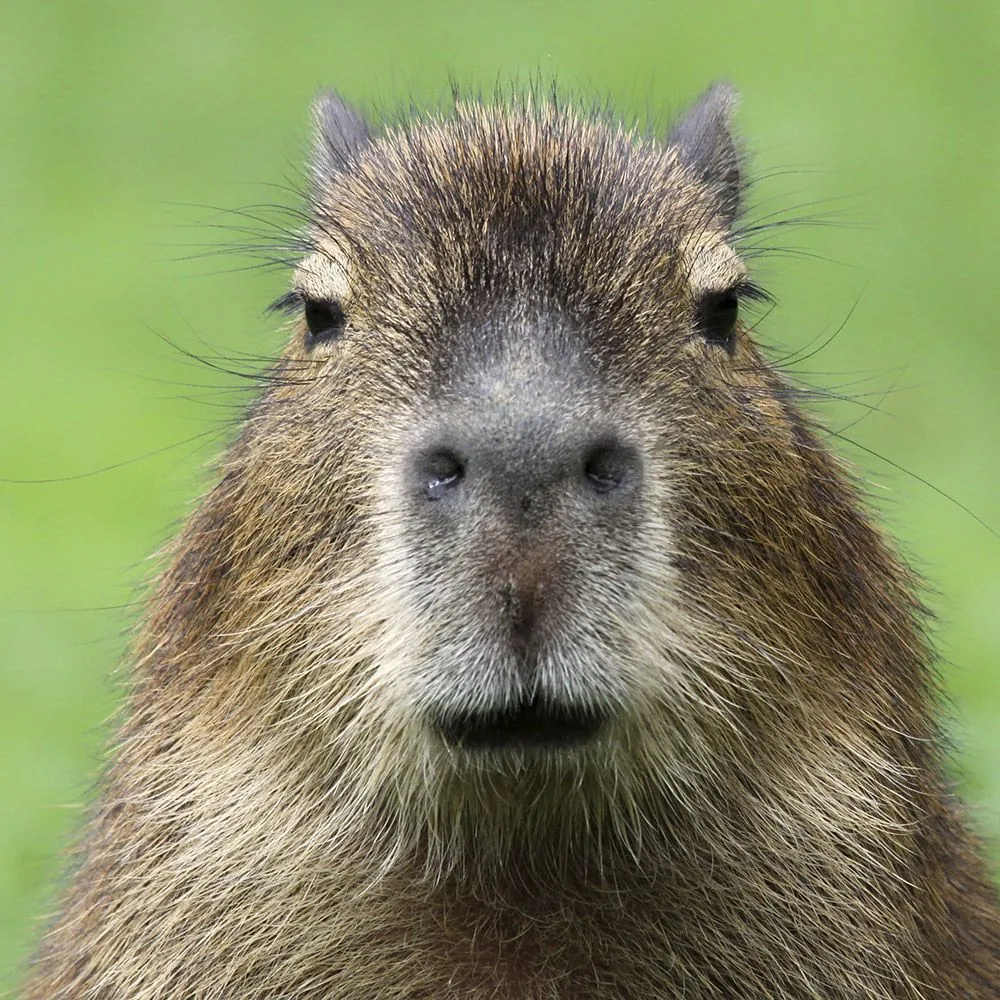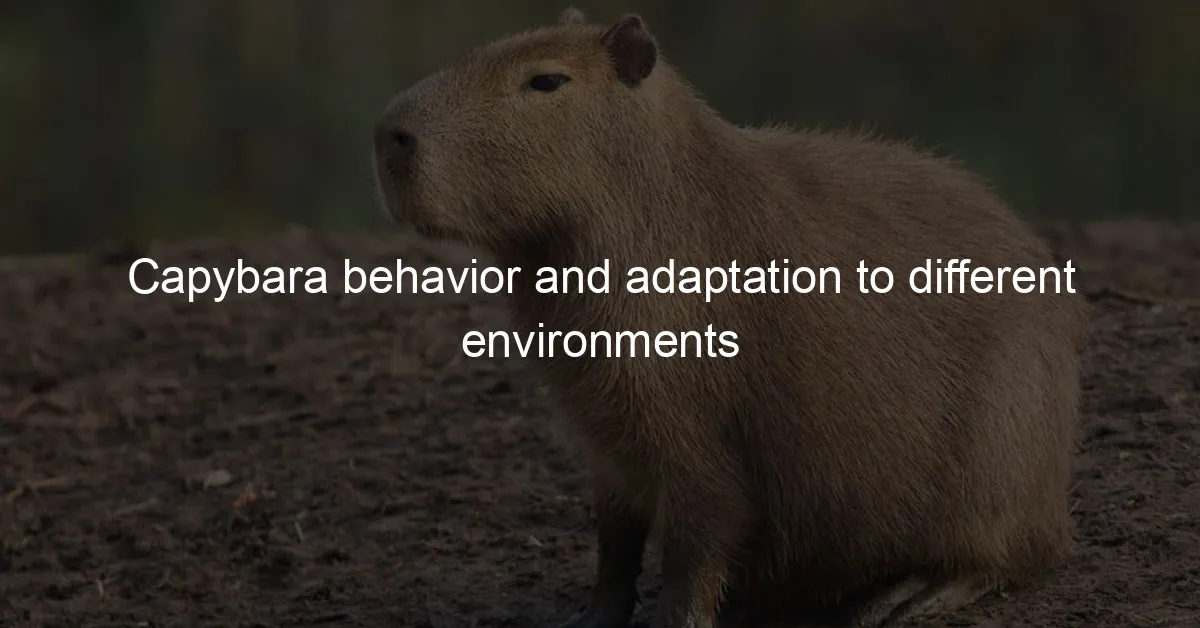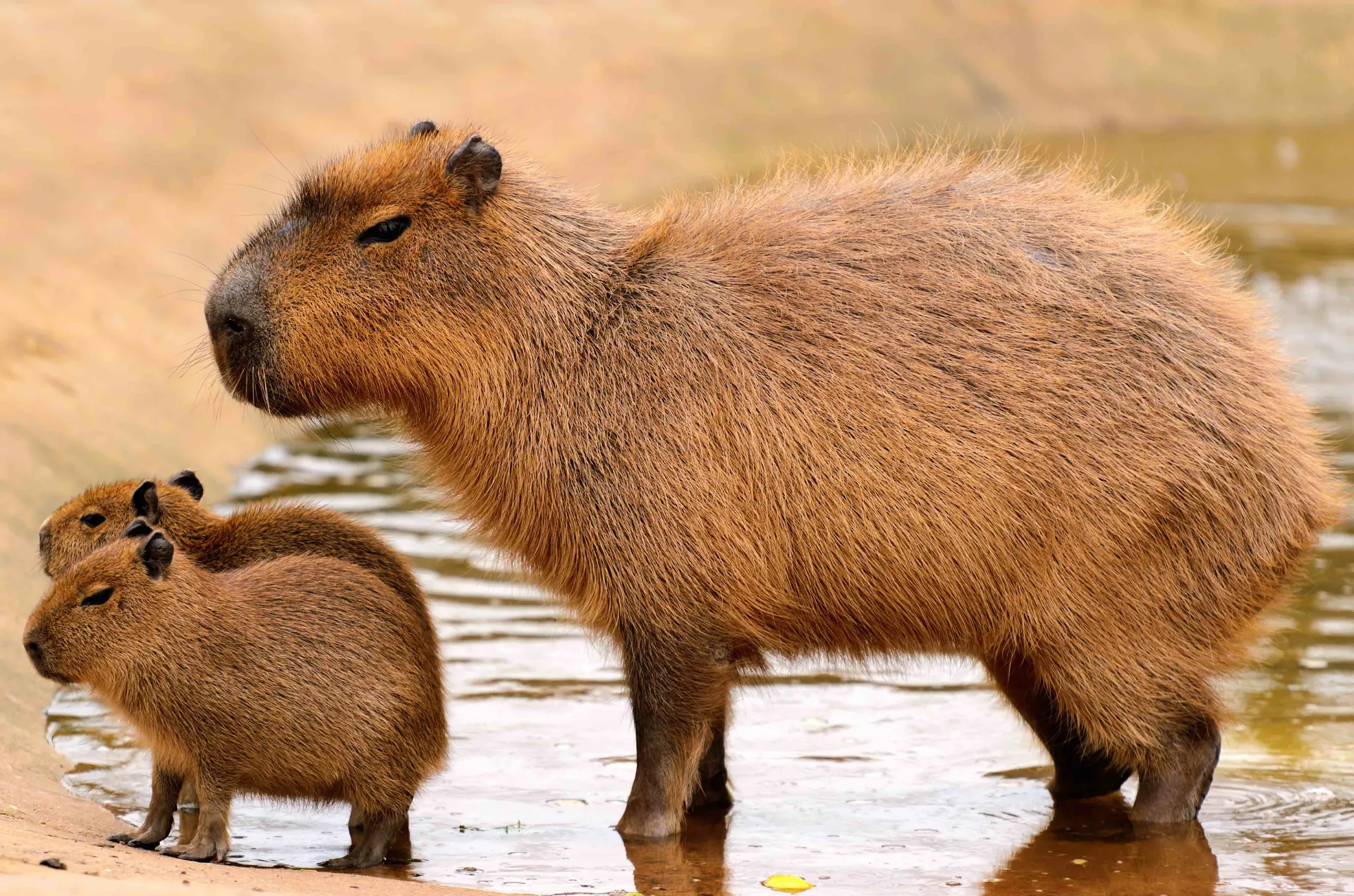Have you ever wondered what makes capybaras so fascinating? These oversized rodents, often dubbed “nature’s chillest animals,” have captured the hearts of millions worldwide. From their semi-aquatic lifestyle to their surprisingly social behavior, capybaras are full of surprises. Let’s dive into the unique characteristics of capybaras and uncover why they’re so beloved—and how they’ve managed to thrive in diverse environments.
What Makes Capybaras Unique?

Capybaras (Hydrochoerus hydrochaeris) are the world’s largest rodents, growing up to 1.3 meters (4.3 feet) long and weighing as much as 79 kilograms (174 pounds). But their size isn’t the only thing that sets them apart. Here’s what makes them truly special:
1. Semi-Aquatic Lifestyle
Capybaras are built for life in and around water. Their partially webbed feet make them excellent swimmers, and they can hold their breath underwater for up to five minutes. Whether they’re cooling off, escaping predators, or foraging for aquatic plants, water is central to their survival.
- Why water matters:
- Thermoregulation: Capybaras lack sweat glands, so they rely on water to cool down.
- Predator evasion: Jaguars and anacondas are no match for a capybara’s diving skills.
- Social bonding: Water bodies serve as gathering spots for capybara herds, fostering community and communication.
2. Social Butterflies of the Animal Kingdom
Capybaras are incredibly social animals, often living in groups of 10 to 40 individuals. These groups, known as herds or bands, are led by a dominant male and include females, juveniles, and subordinate males.
- How they bond:
- Grooming: Mutual grooming helps strengthen social ties and keeps their fur free of parasites.
- Vocalizations: Capybaras communicate through a variety of sounds, from purrs to alarm barks.
- Playful behavior: Jumping into water isn’t just practical—it’s also a way to have fun and bond with others.
3. Dietary Flexibility
Capybaras are herbivores with a surprisingly adaptable diet. While they primarily graze on grasses and aquatic plants, they’re not picky eaters. In fact, they’ve been known to munch on crops like corn and sugarcane in agricultural areas.
- Key dietary traits:
- Coprophagy: They eat their own feces to extract maximum nutrients from tough plant material.
- Dental adaptations: Their teeth grow continuously, allowing them to grind down tough vegetation.
How Capybaras Adapt to Different Environments

Capybaras are masters of adaptation, thriving in habitats ranging from dense rainforests to urban landscapes. Here’s how they do it:
1. Urban Adaptation
In cities like São Paulo, capybaras have become a common sight, grazing on university campuses and even lounging by highways. Their ability to coexist with humans is a testament to their resilience.
- Challenges of urban life:
- Vehicle collisions: Increased infrastructure has led to higher mortality rates due to accidents.
- Crop damage: Their love for crops has made them pests in agricultural areas.
2. Surviving in the Wild
In the wild, capybaras rely on their social structure and aquatic skills to evade predators. Their ability to switch between grazing and browsing allows them to thrive in diverse ecosystems, from wetlands to savannas.
Why Capybaras Are Internet Sensations

Capybaras have taken social media by storm, thanks to their laid-back demeanor and quirky behaviors. Whether they’re lounging in hot springs or hanging out with other animals, their “chill vibes” resonate with people worldwide.
- What makes them so relatable?
- Calm nature: Capybaras are known for their gentle and non-aggressive behavior.
- Playful antics: Their water jumps and social interactions are endlessly entertaining.
FAQs About Capybaras

1. Are capybaras friendly to humans?
Yes, capybaras are generally docile and friendly, making them popular in zoos and wildlife parks.
2. What do capybaras eat?
They’re herbivores, primarily feeding on grasses, aquatic plants, and occasionally crops.
3. Can capybaras swim?
Absolutely! Their webbed feet and streamlined bodies make them excellent swimmers.
4. Where can I see capybaras in the wild?
Capybaras are commonly found in South America, particularly in the Pantanal region of Brazil and the Llanos of Venezuela.
Final Thoughts
Capybaras are more than just the world’s largest rodents—they’re a testament to adaptability, resilience, and the power of community. From their semi-aquatic lifestyle to their social bonds, these gentle giants have carved out a unique niche in the animal kingdom. Whether you’re fascinated by their behavior or charmed by their internet fame, there’s no denying that capybaras are truly one of a kind.
So, the next time you see a capybara lounging by the water, take a moment to appreciate the unique characteristics that make them so special. After all, who wouldn’t want to live life with the chill vibes of a capybara?
